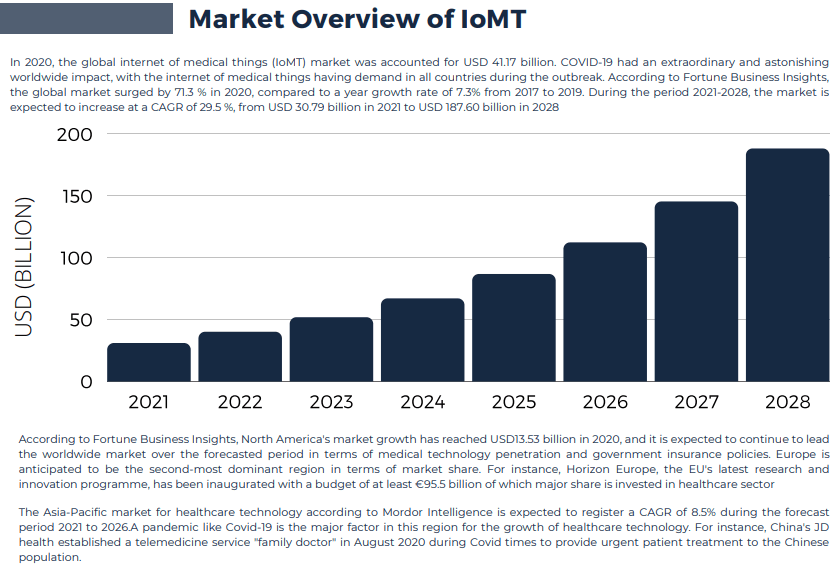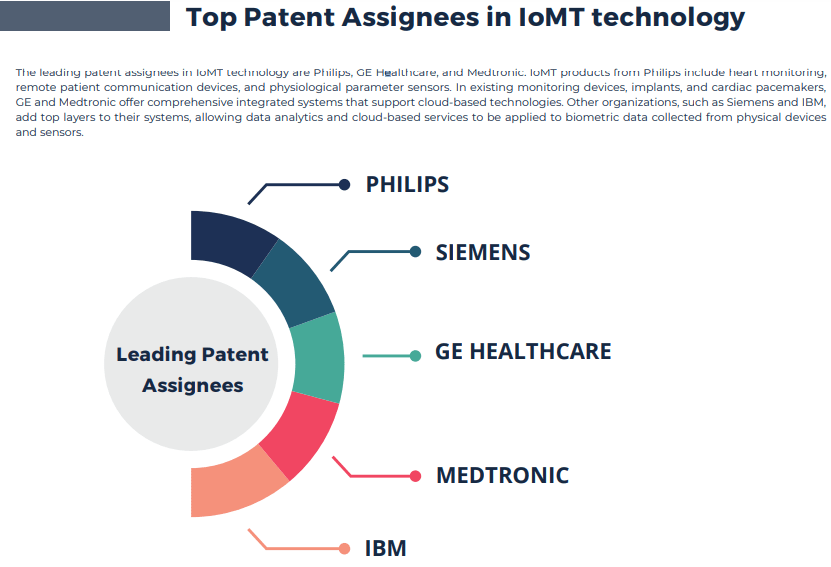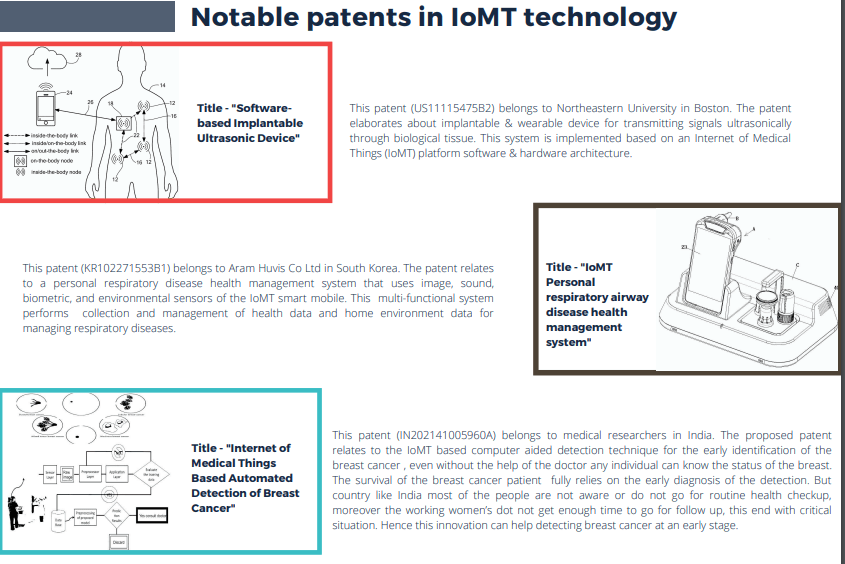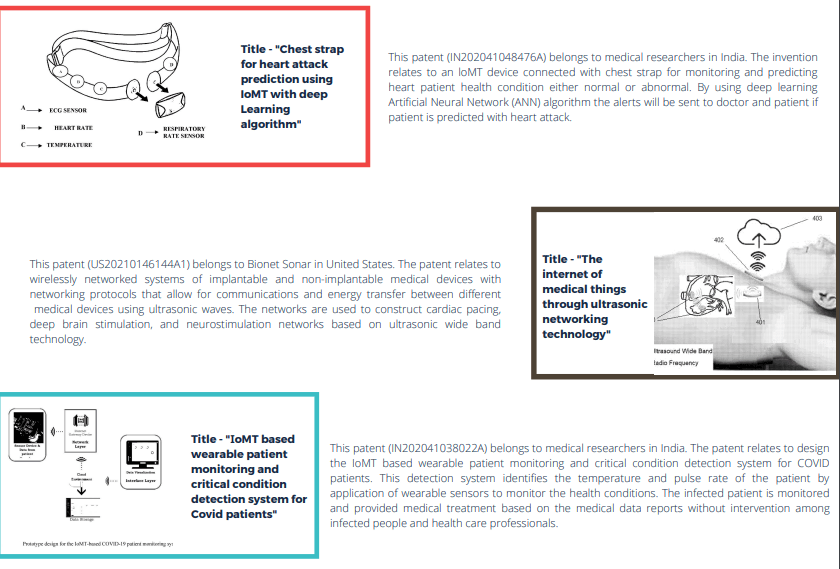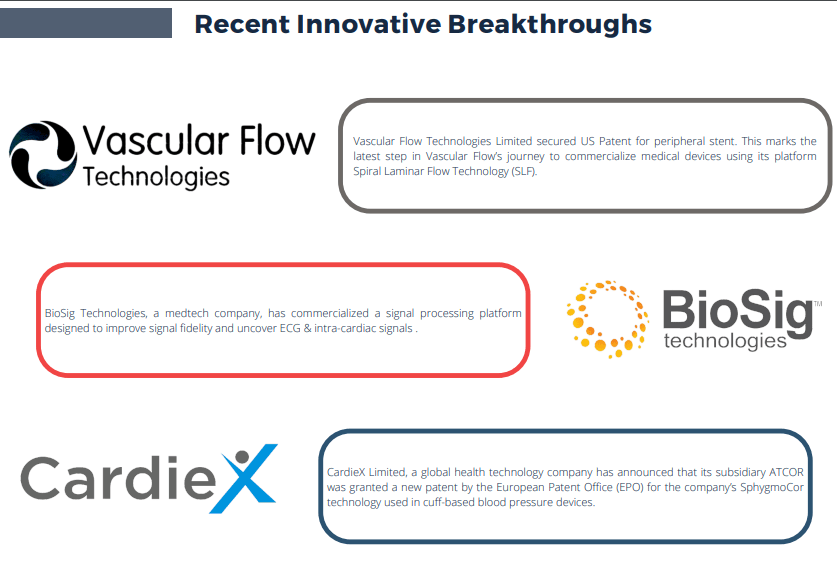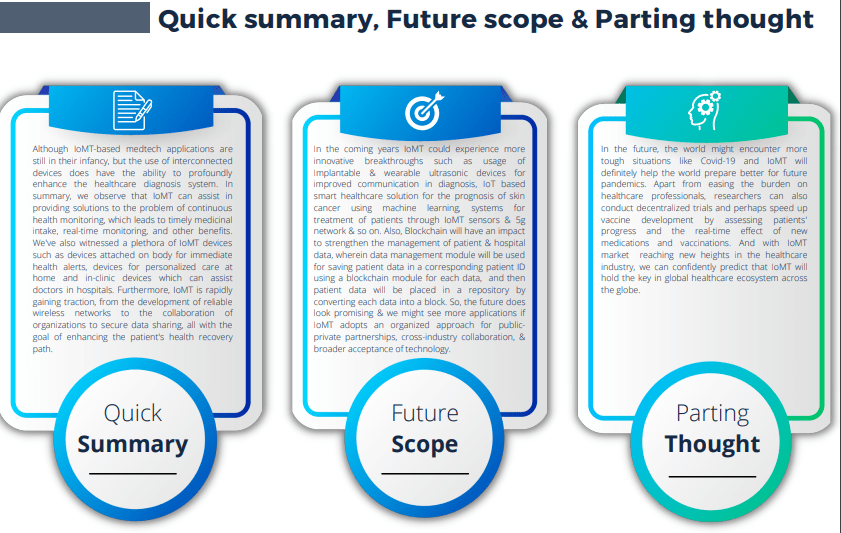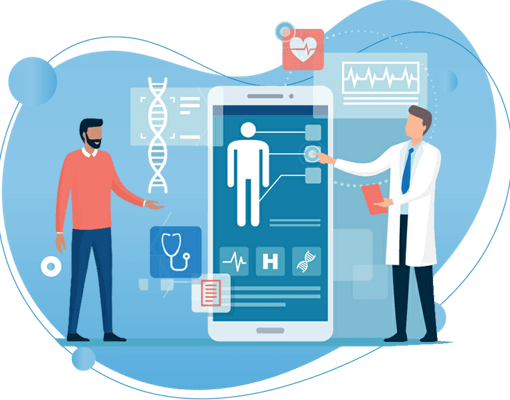
- January 15, 2022
- By admin_panel
- Comments 0
INTERNET OF MEDICAL THINGS
The internet of medical things (IoMT) is a term that is referred to a medical technology in which patient’s health is monitored by various interconnected healthcare devices such as ECG monitor, healthcare wearables, smart beds, blood pressure monitor, sleep monitor, ambulatory heart monitor, smart apps and so on. The data monitored through these smart medical devices/apps is further sent to the healthcare experts to take the appropriate medical actions for the concerned disease. The major goal for implementing this technology is to reduce human errors, reduce rehospitalization, lower healthcare expenses, make patients self-reliant, and ultimately improve healthcare outcomes.

Wireless sensor networks are utilized in this healthcare technology to generate, collect, & transmit medical data or personal health information, which is then examined to make treatment recommendations. For example, an electrocardiogram sensor can be incorporated to monitor heart’s activity, an electromyogram sensor for muscle’s activity, an electroencephalogram sensor to monitor brain’s activity, a blood pressure sensor for blood pressure monitoring, and a tilt sensor for trunk position monitoring. All of these sensors ensure that they are not only beneficial to patients, but also allow doctors and physicians to keep tabs on patients regardless of whether they are at home or in a hospital.

The recent Covid-19 pandemic has exposed the importance of social distancing, managing hospitals & health professionals’ workload, medicine intake, treatment accuracy and has drawn our attention to the persisting healthcare industry’s limitations and problems, as well as the importance of implementing IoMT technology. The IoMT market will certainly grow in importance as a result of the current outbreak. In fact, Fortune Business Insights forecasts that the worldwide IoT in the healthcare market will grow in an eight-year time frame, developing from $57.62 billion USD in 2019 to $352.88 billion USD by 2027. And, this report would also outline the significance of IoMT& digital data to improve patient care, reduce costs, and improve workflow.
Importance of IoMT & current use in Healthcare System

Considering the recent outbreaks of deadly viruses such as Covid-19, the importance of integrating the IoMT technology in the healthcare industry should be acknowledge. Presently, the medical technology is already being implemented in numerous treatments and systems such as cancer treatments, automated insulin delivery systems, drug management, coagulation testing, personal emergency response system, fitness tracking & diagnosis. These systems provide real-time health data leading to accurate decisions & reducing human errors. For example, patients suffering from asthma can be monitored in real-time by connected inhalers, that transmit data to a software application. The application triggers out alerts to notify patients in instances when the inhaler is left at home or when the inhaler is being used improperly.
In recent times there has been a significant rise in the workload of the healthcare system due to an increase in the number of Covid-19 cases, and IoMT has been influential in addressing this situation. Recently, a cloud-based patient management solution namely Masimo SafetyNet was launched by Masimo, an American medical technology company, has enabled hospitals to remotely monitor patients in alternative care units, such as emergency care facilities and homes. It monitors a patient’s pulse rate, perfusion index, blood oxygen saturation, and respiration rate via a tether-less, single-patient-use sensor. It is especially beneficial for cancer patients who have infected with the coronavirus, as they would be at a higher risk of deteriorating symptoms or death if admitted to a hospital.

Fortune Business Insights also quotes that, if given the option, around 62% of world’s population would opt for virtual technology over the conventional methods used for health advice. In comparison, 57% of people consider remote monitoring of health issues via home gadgets is a smart idea. So, according to above opinion of people, the continuous contact among patients and doctors can be decreased altogether by utilizing IoMT concept, particularly in situation like Covid-19



IoMT technology architecture is composed of three layers, namely; Data management layer, Data collection layer, and Medical server layer. Healthcare sensors that are present in the data collection layer measure vital patient data and export the collected data to the data servers that are situated in the data management layer. The measurements are captured at the edge servers which are installed in the patient proximity before transmitting them to data servers located in the data management layer for further pre-processing. The data servers in the data management layer acquire, process, and interpret the detected clinical data by supplying to approved healthcare professionals with access interfaces in the medical server layer. After acquiring and reviewing patient health data on the medical server network, the associated healthcare professionals provide patients with expert advice to take further immediate actions. Further are the three layers explained in brief.






